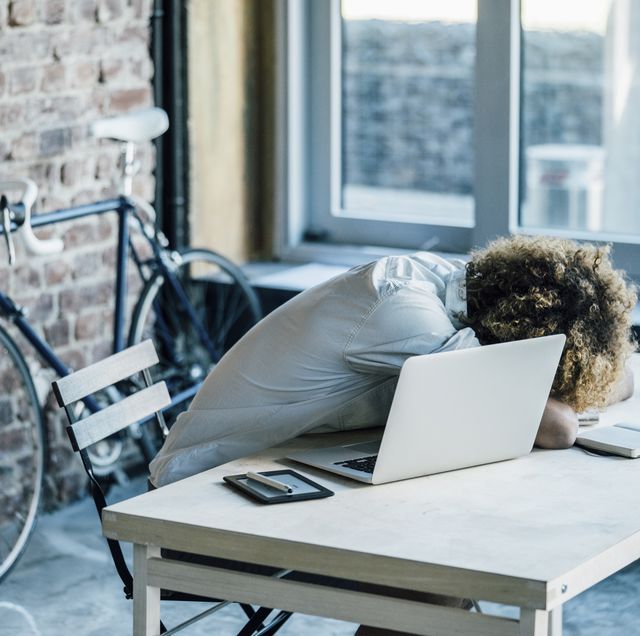- According to new research published in the journal BMC Musculoskeletal Disorders, stress at work could be the culprit of chronic back pain.
- Factors such as workload, job control, and social support in the office are significant contributors.
- While regular stretching and physical activity can be useful, taking a step back to see if there is anything within your control that can mitigate your work-related stress can ensure your back stays healthy and pain-free for the long haul.
Even with standing desks and walking meetings, work still tends to be tough on your back, previous research has found. Pair a hunched-over position at your desk with a hunched-over position on your bike, and that can spell trouble. But it may not be poor posture that’s the culprit of your chronic pain. New research suggests that psychological and social factors in the workplace could be just as detrimental as physical challenges.
In the meta-analysis, published in the journal BMC Musculoskeletal Disorders, a team of German psychologists reviewed 18 studies involving over 19,000 individuals, focusing on chronic lower back pain and psychosocial work issues, such as a high workload, little social support at the workplace, and feeling no control over their daily tasks.
They found that these issues made people much more likely to report lower back pain, which could have ramifications for productivity, healthcare costs, and more absences from work, according to study coauthor Gabriele Buruck, Ph.D., of the Dresden University of Technology’s department of psychology.
“Chronic low back pain is the most prevalent pain disorder, and it’s associated with immense costs to the health care system,” she told Bicycling. “The problems are often attributed to risks at the workplace, but are usually thought to be related to incorrect posture or sitting for too long. But we were able to show that factors like workload, job control, and social support significantly contribute to the development of the disease as well.”
Even tweaking one of these factors can be helpful, she added. For example, the effects of an overwhelming workload can be mitigated by greater autonomy in how that work is handled, as well as support and encouragement from colleagues and bosses.
Redesigning workplaces for better ergonomics may help address physical issues that could cause chronic lower back pain, said Buruck, but without policies that give employees a greater degree of control, regular feedback and recognition, and more flexible break times, those efforts could be wasted.
[Find 52 weeks of tips and motivation, with space to fill in your mileage and favorite routes, with the Bicycling Training Journal.]
But why would these types of psychological and social pressures affect the lower back specifically? There are a number of theories about why emotional distress in general can contribute to back pain. One of the most prevalent, however, is that during times of stress, the body releases hormones like cortisol and adrenaline, which not only raise blood pressure, but also cause muscles around the spine to tense in response to perceived threats. When that’s combined with being sedentary and exercising less, the lowered amount of muscle mass can turn that tension into strain.
While regular stretching and physical activity can be useful, as Buruck notes, you’ll only be addressing part of the reason for your back pain if you’re not taking work factors into consideration. Taking a step back to see if there are any factors within your control that can mitigate your work-related stress can ensure your back stays healthy and pain-free for the long haul.
Elizabeth Millard is a freelance writer focusing on health, wellness, fitness, and food.













